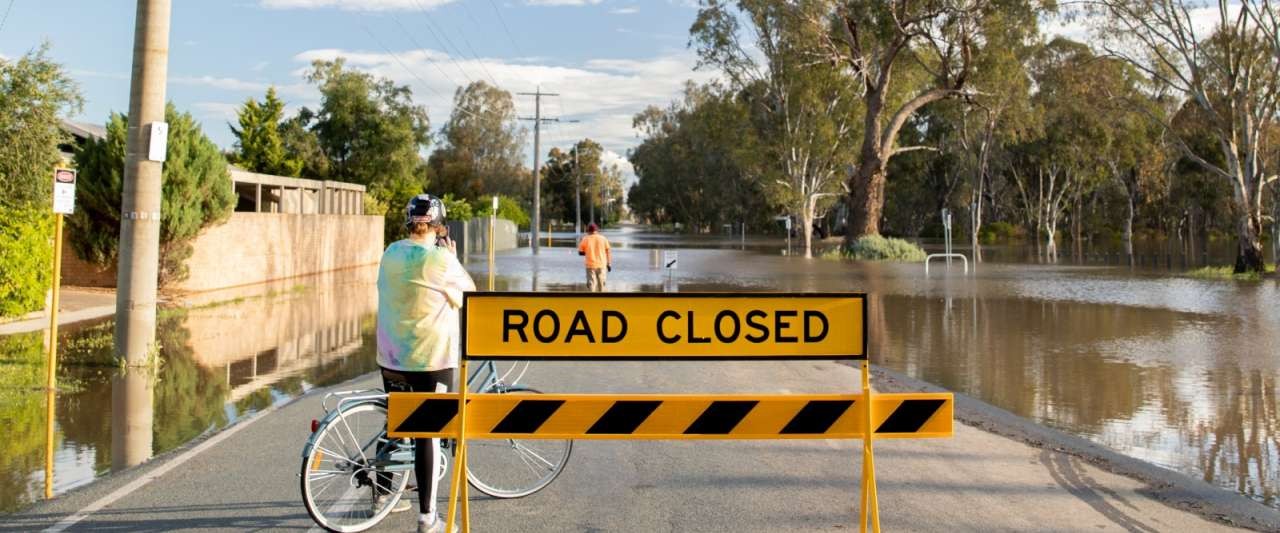What to do in a flood emergency

During a flood emergency, you may be advised to evacuate your home. Whether you choose to evacuate or isolate at home, make sure you are fully informed about the best course of action to take for you and your family.
Stay informed
- Monitor local conditions and be aware of the situation.
- Set a watch zone on the VicEmergency app — Apple / Android / Web
- Tune into emergency broadcasters and listen to the local radio stations.
- Follow the Shepparton News Facebook page, the Council Facebook page and the VICSES Facebook page
- Check our Road Closures page and the VicRoads Road Closures Map if you need to travel.
- Floodwater is dangerous - never drive, walk, ride or play in floodwater.
- Spread official information - ensure your family and neighbours are aware of the situation. Confirm rumours with official sources.
Isolating at home
- If you are isolated, and do not have adequate food, water and medications, please contact VICSES on 132 500. Be prepared to live without power and sewerage.
- If your home is in danger of encroaching waters, raise belongings by placing them on tables, beds and benches or relocate to higher ground. Take shelter in the highest location possible.
- Block toilets, household drains, sinks and plugs to stop sewerage backflow.
Evacuating
- Act Now - take immediate precautions to protect life and property.
- Turn off gas and electricity at the mains and lock your doors and windows when you evacuate.
- Travel to a safe place away from flooding, with family or friends.
- Collect your evacuation kit of medicines, important documents and momentos and pets and take them with you. See below for what your kit should include.
- Remain in your home or business if flooding is dangerous and may put your life at risk. If it is too late to leave, and you have not evacuated, you should shelter in the highest location possible. Never enter floodwater.
For further information visit the VICSES website.
What to take if you need to evacuate
Have an emergency kit - make sure you have essential items on hand and the kit is in an easy to grab location. It should include:
- Radio (battery-powered)
- Torches
- A supply of batteries (multiple sizes)
- Device chargers (solar-powered and standard)
- Mobile phone
- Food - basic staples that don't require heating or cooling
- Bottled water
- Warm, waterproof clothing and comfortable shoes
- Spare medication, prescriptions
- A first aid kit
- Pet essentials (see below)
- Cash and a printed copy of your Emergency Plan (RediPlan)
- Sleeping bags and Pillows
- Blow up mattresses
- Things to keep kids occupied
Evacuating with pets
If you have pets and need to leave your home, make sure you have an emergency kit for them. This needs to include veterinary medication, bedding, food, water and bowls. Ensure animals are wearing a collar and can be identified. If attending a relief centre, place animals in cages or on leads as they will be anxious and stressed, and you will need to make them feel secure and comfortable. Be prepared to set up your dogs in your car – bring a crate or cage.
If possible, leave your pets with friends or family who are in areas safe from flooding - this will be less stressful for them.
Children
The Australian Red Cross has a list of resources for dealing with a crisis and how to talk to your children about the situation.
They have also developed the Danger Days app for kids, to help them understand and cope.

